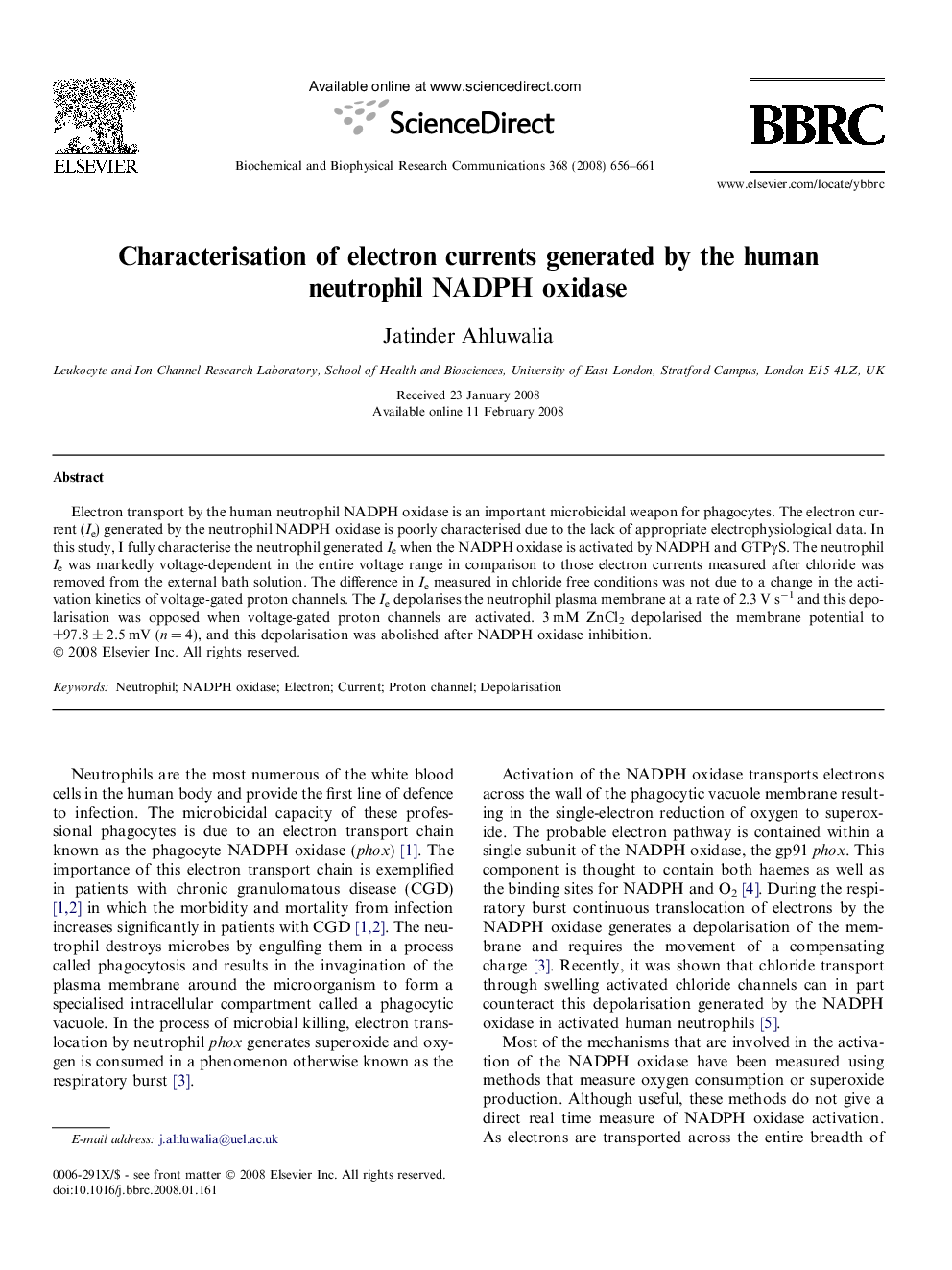| Article ID | Journal | Published Year | Pages | File Type |
|---|---|---|---|---|
| 1936188 | Biochemical and Biophysical Research Communications | 2008 | 6 Pages |
Electron transport by the human neutrophil NADPH oxidase is an important microbicidal weapon for phagocytes. The electron current (Ie) generated by the neutrophil NADPH oxidase is poorly characterised due to the lack of appropriate electrophysiological data. In this study, I fully characterise the neutrophil generated Ie when the NADPH oxidase is activated by NADPH and GTPγS. The neutrophil Ie was markedly voltage-dependent in the entire voltage range in comparison to those electron currents measured after chloride was removed from the external bath solution. The difference in Ie measured in chloride free conditions was not due to a change in the activation kinetics of voltage-gated proton channels. The Ie depolarises the neutrophil plasma membrane at a rate of 2.3 V s−1 and this depolarisation was opposed when voltage-gated proton channels are activated. 3 mM ZnCl2 depolarised the membrane potential to +97.8 ± 2.5 mV (n = 4), and this depolarisation was abolished after NADPH oxidase inhibition.
